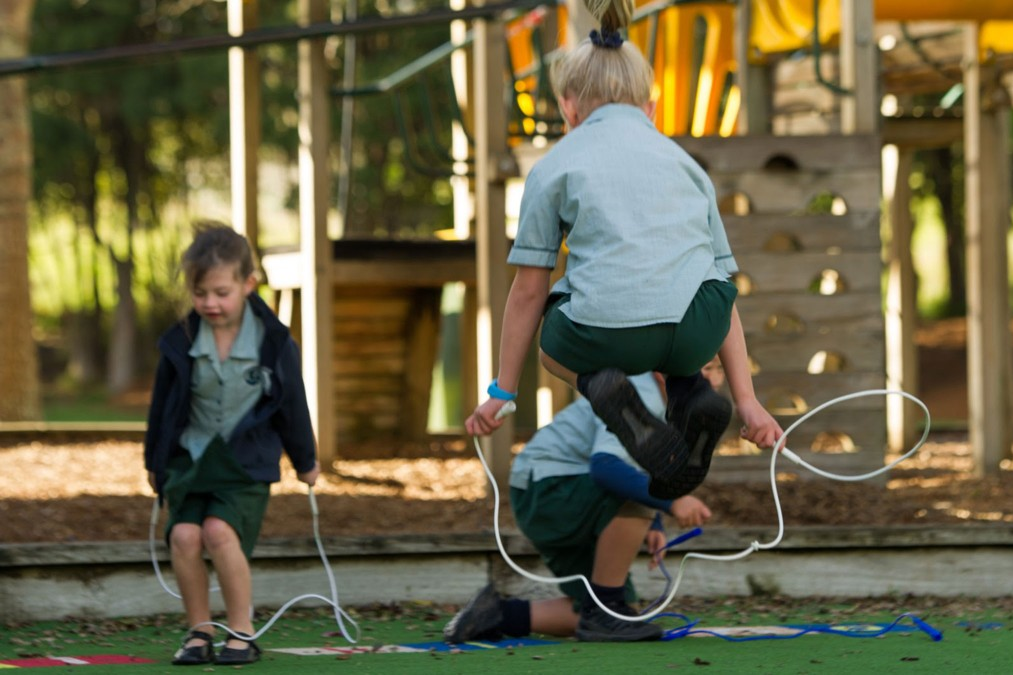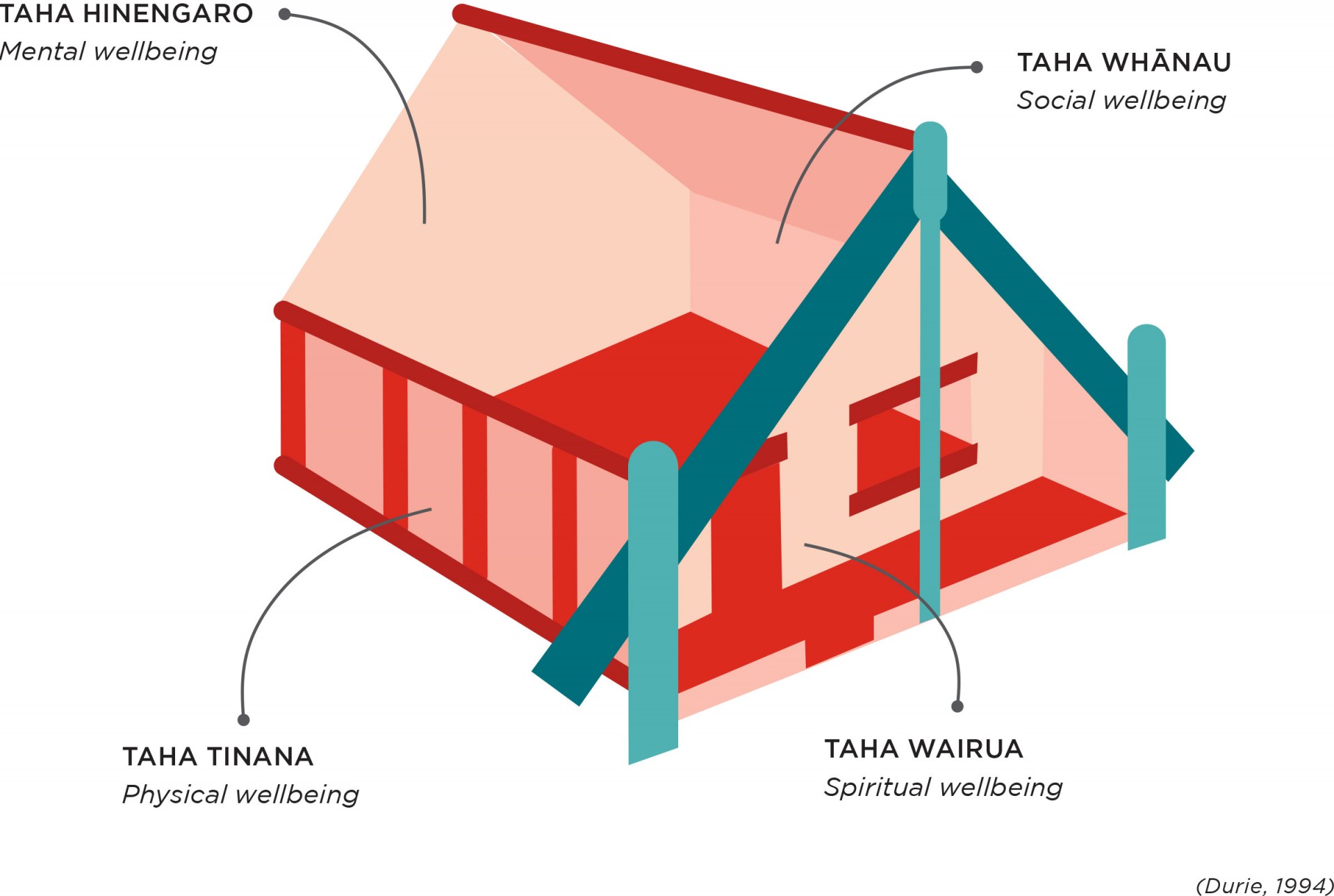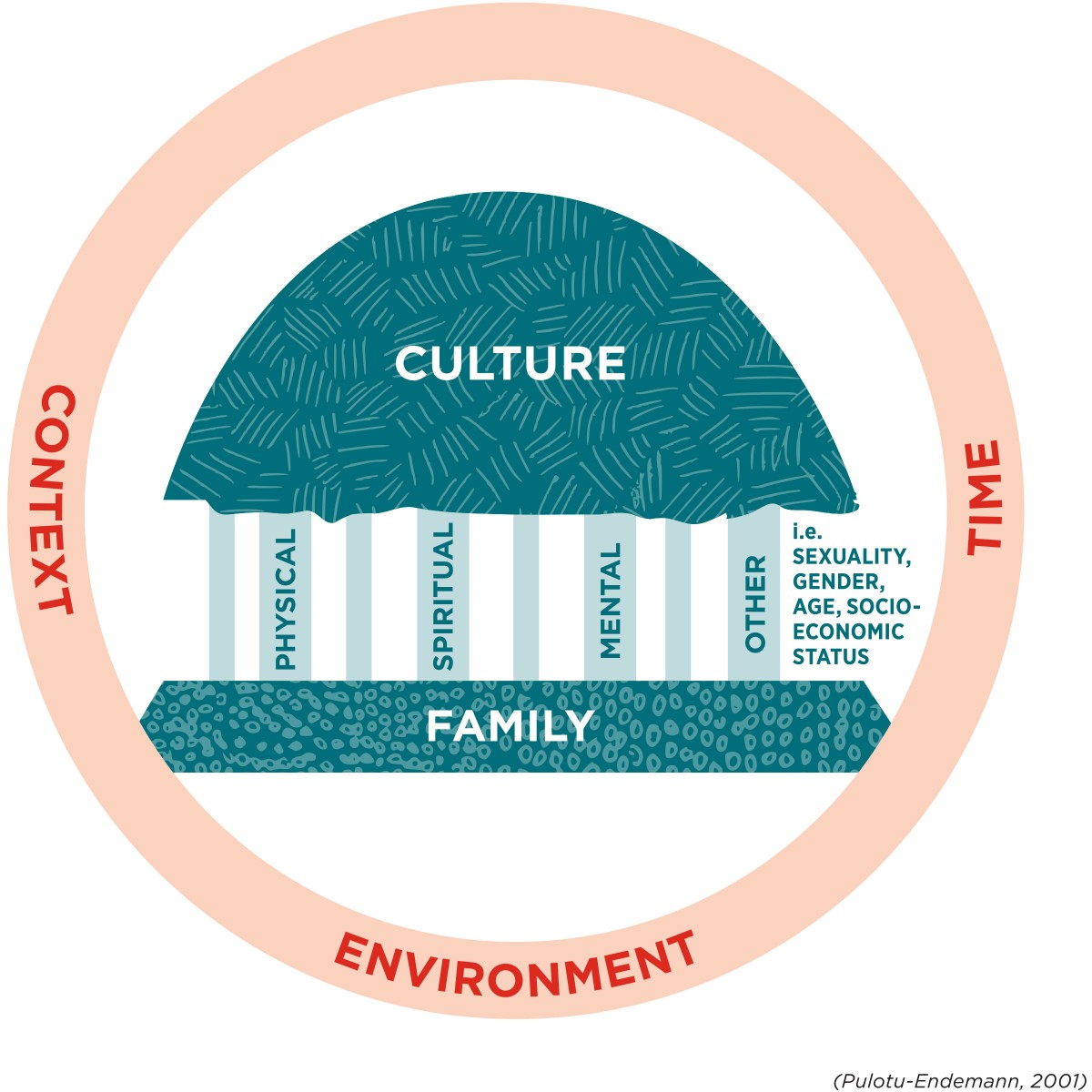Hauora
This resource provides an overview of Hauora and the dimensions it comprises. It explores Te Whare Tapa Whā model of wellbeing from a Māori perspective as well as the Fonofale model of wellbeing from a Pacific perspective.

About this resource
Hauora is a Māori philosophy of health unique to Aotearoa. This resource outlines the four dimensions of Hauora and explores a Māori and Pacific model of wellbeing.
Hauora
Hauora is a Māori philosophy of health unique to Aotearoa. It comprises:
Taha tinana (the physical dimension)
Physical wellbeing as well as the physical body, its growth, development, and ability to move, and ways of caring for it.
Taha hinengaro (the mental dimension)
Mental and emotional wellbeing includes coherent thinking processes, acknowledging and expressing thoughts and feelings, and responding constructively.
Taha whānau (the family dimension)
Social wellbeing explores family relationships, friendships, and other interpersonal relationships; feelings of belonging, compassion, and caring; and social support.
Taha wairua (the spiritual dimension)
Spiritual wellbeing and the values and beliefs that determine the way people live, the search for meaning and purpose in life, and personal identity and self-awareness. (For some individuals and communities, spiritual wellbeing is linked to a particular religion; for others, it is not.)
Each of these four dimensions of hauora influences and supports the others.
Dr Mason Durie’s te whare tapa whā model compares hauora to the four walls of a whare, each wall representing a different dimension. All four dimensions are necessary for strength and symmetry.

The Fonofale model of wellbeing provides a uniquely Pacific perspective on the concept of wellness and health. Like te whare tapa whā, it is built around the idea of a house, or Samoan fale. The fale represents the wellbeing of an individual and is made of several components.
The floor represents aiga, or family. It encompasses wider whānau as well as other relationships such as marriage, agreement, or partnership. The roof is the culture, beliefs, and values that shelter the family. The four pou represent physical, mental, spiritual, and other aspects of a person. They connect culture and family with each other. They also complement and interact with each other.
No part of the fale can stand on its own. Each piece needs the others to make a solid structure.
Surrounding the fale is a boundary or cocoon. It represents aspects that are external to the individual, namely the physical environment, the period in history, and an individual’s particular social, economic, political, and legal context.



